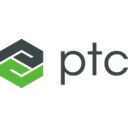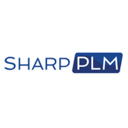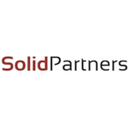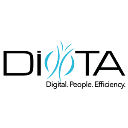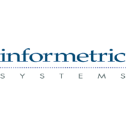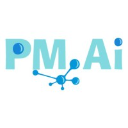PLM software: purchase guide
What is PLM Software?
Definition
PLM (Product Lifecycle Management) software facilitates product development processes by consolidating all product-related information into a single software package. This includes everything from the development of the first R&D specifications to production shutdown.
How does it work?
PLM software fulfils the roles of many software packages: accounting management, CRM software, project management, ERP. Everything is synthesised in the same scalable and configurable software solution. You access the tool's interface from a web browser, use the different modules, and access the product sheets.
In this way, you benefit from the digitisation of all the information related to the product you wish to market.
Very versatile, it helps you to manage the design while providing you with an essential insight into the different processes. Thanks to precise analyses and cross-referencing of information, you save time, avoid unnecessary tasks and reduce your production costs.
PLM management software optimises your new product development process and makes them more competitive while improving quality. This management tool also manages the material, human and information security aspects while complying with the various regulations.
What are the Main Features of PLM Software?
These management solutions are based on two fundamental modules.
Product Data Management
PLM software centralises and unifies information related to different products in a document management tool (Electronic Document Management or EDM) that includes:
- Document management in different formats: specifications, product structure, white paper, marketing campaigns, etc.
- Electronic management of technical data and documents;
- Sharing files, documents internally or with customers, suppliers, partners
- Management of access rights and traceability of modifications, possibility to collaborate on the same project and work at the same time on the same information. Synchronous and asynchronous collaboration
- Electronic storage and archiving of documents, archive management.
Product information management is unified, all users can collaborate.
Product Development and Operation
Developing a product in project mode involves certain functionalities present in online project management software:
- Project planning and task management (description, deadline, assignment, scheduling, comments, etc.) and follow-up by project
- Workflow management to optimise the steps to be taken and the workload of employees on each task.
- Dashboards with KPIs, diagrams (Gantt, etc.) to obtain agile and analytical reporting on the progress of each project
- PLM tools give you the flexibility to configure your software to meet your company's needs in terms of:
- Management of computer-aided design (CAD) and various classifications: 2D design and 3D modeling
- Supply Chain Management: quality, production, time
- Etc.
The open architecture of the software integrates into your information system (CAD, office automation, ERP, CRM, etc.) and your business processes.
It is scalable and adapts to the new needs of industrial companies such as the Internet of Things (IoT).
Your data is secure.
Who Uses PLM Software?
Particularly appreciated by large companies, it can be very useful for SMEs, SMIs or VSEs that are starting to produce a complex product or that are required to work collaboratively on a daily basis.
This type of management software is particularly suitable for:
- Construction and public works
- Real estate
- Energy and sustainable development
- Industry and Trade
- Transport services
Why use PLM Software in your Company?
The use of PLM software has become essential for projects that require a lot of information and a large number of collaborators. However, it has some disadvantages.
Advantages
- Reduces the time it takes to market your new product
- Increases the productivity of your teams
- Facilitates the design and development of your products
- Improves human resources management by optimising your decision-making
- Offers higher quality by processing product testing and experience feedback
- Gathers all data related to the product (suppliers, partners, prospects etc)
- Streamlines the stages of the product life cycle
- Eliminates unnecessary time-consuming tasks and allows you to focus on essential tasks that improve the customer experience
- Capitalises on your company's know-how and promotes business intelligence
- Reduces the risk of input errors or unnecessary duplication
- Verifies the compliance of equipment with the various standards
- Promotes infrastructure availability by smoothing the workflow
- Takes into account quality and environmental issues (sustainable development)
Disadvantages
- The cost of a custom PLM solution leaves no room for error
- PLM systems require that all IT resources be connected to the tool
- Employees can quickly be overwhelmed by the complexity of these tools, they must be trained beforehand
- Employees can be lost in the mass of information present in the tool
PLM Software In-House or in SaaS?
Both solutions have advantages and disadvantages. It will be necessary to select the PLM software most likely to increase your company's performance while being practical for each of your employees.
SaaS (Software as a Service) is a software solution based on the use of an online platform with many services such as telephone assistance, remote data recovery in case of malfunction or automatic module updates. In SaaS mode, you define your employees' access and can use the information wherever you are. In addition, you can use the tablet version during meetings or on business trips thanks to the information placed in the cloud.
On the other hand, the internal mode of the ERP system is more secure because the information is only placed on your company network.
Compare the different offers and test PLM software with the trial offers often offered by software publishers.

